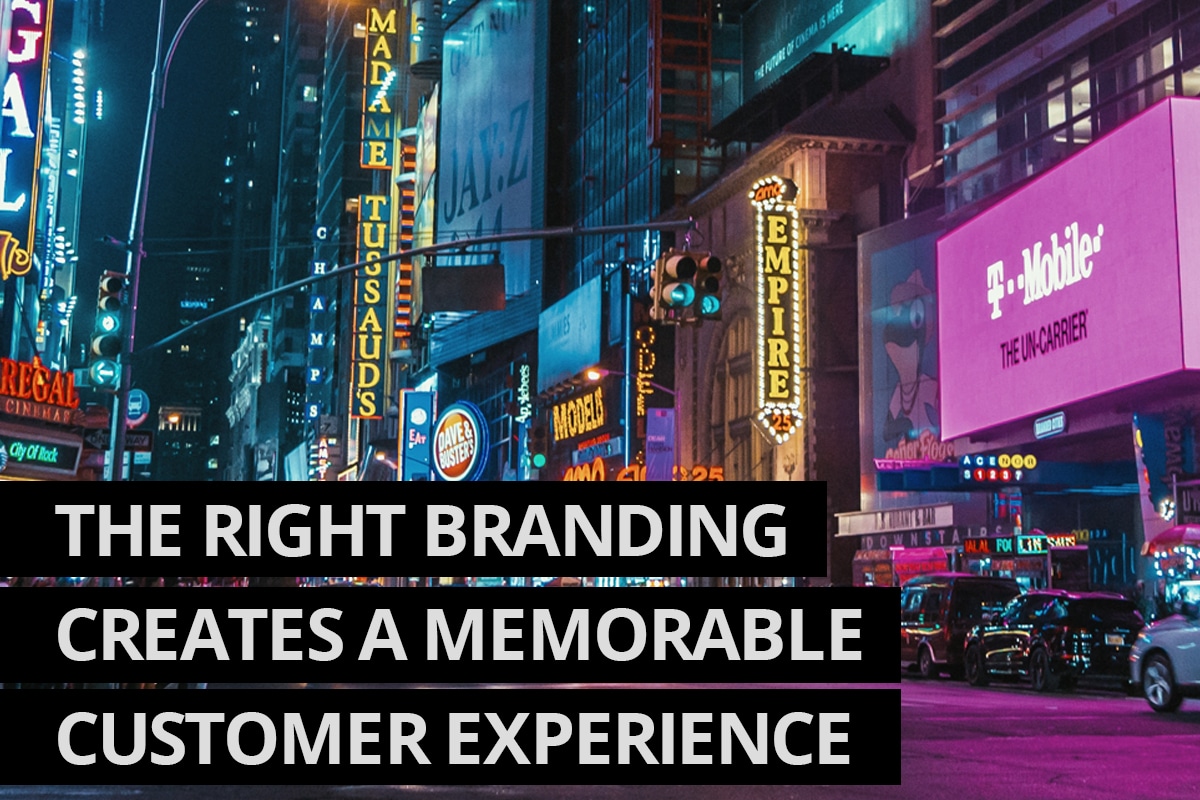When you think about how your customers view your business, you are considering your branding.
There is often a lot of confusion about what a brand is or how it affects your business. The conversation often comes back to seemingly small or superficial things. Branding is more than a logo.
What’s essential to understand about your brand is that your brand story creates the customer experience. If that experience isn’t informed by your brand, then it’s an experience they could have anywhere. Why would they come to you? When you craft a custom, branded experience, your business becomes unforgettable. It’s the one place your customers can turn for a specific experience. Why would they go anywhere else?
By looking at how your business is presented to customers, you can track the feeling and experience you are providing and find small ways to make adjustments for branding your Ontario business.
Let’s look at how you craft a brand that stands out.
1. Details Are Important
Your color choices matter. Specific colors signal different emotional responses. Blues are calm, reds are lively, and earth tones are a fitting signal for a natural products company. Colors bring about emotions. We associate them with different things, and when implemented appropriately, they become part of how we feel about a company.
You need to choose colors that fit the emotions of your customers. If you are running an exclusive and expensive business, then you want your brand to feel luxurious to your customers. If you run a children’s toy company, you want it to be bright, cheery, and fun.
The first thing to know about your business is the feeling you want your customers to have a right from their first impression, which is often the moment they see your logo.
This means you need to create a logo that uses your color choices and tells the story of your company. From the first moment a customer sees your logo, they should have a hint of what your business is about. The customer expectations are beginning to form.
Expectations are everything. A happy customer is one whose expectations were met or exceeded. When they first see your company, customers begin to set expectations for the price range and services or products they will be offered. Part of a satisfactory experience is having these expectations met.
2. Create Consistency For Your Customers
Consistency affects the story you are communicating to your customers. This can be considered from many angles.
For example, it’s important your visuals are consistent. This makes them easier for your customer to remember. The next time they come across your brand, they will know it immediately.
You also need to be consistent in your conversations with your customers. Whether they contact you through Facebook, live chat support, a phone call, or an email, your customer expects that they will receive the same information and the same voice of your brand.
If you run a restaurant and part of your company’s value message is that your burgers are the spiciest in three counties, then whenever your customer interacts with your company, they should get that same message. If one day your customer emails and an employee says the burgers are “mild”, this breaks your message, the customer becomes confused, and no longer knows what to trust or believe.
Trust is the most valuable asset to get a customer to buy. It’s also easy to lose. Value it appropriately and create a consistent voice for your brand.
If you’re struggling with voice branding (as many businesses do) it can be valuable to consult a branding company. They can help you develop a voice and a strategy for employing that voice consistently.
3. Make Your Ontario Branding Personal
The first step here is to understand who your customer is.
When you’re advertising to potential customers, you want to know their demographics (age, gender, marital status, employment, education level) and tailor your marketing to speak to them.
For repeat customers, you can use data on their past purchases and viewing history to show them products tailored to what they may like best.
This kind of personalization creates a custom experience and a deeper relationship with your business. That kind of value translates to a higher conversion rate.
4. Employ a Social Listening Strategy
Your customers are talking about your business on social media. Sometimes they tag you, but often they just mention your company name.
We know that while customers may share a great experience, they often turn to social media to complain about a horrible experience.
You don’t want to argue with customers. You don’t want to be defensive.
But when you make social listening a part of your digital marketing strategy, you can catch these complaints and take the opportunity to reply with understanding and a possible solution for their bad experience.
This does wonders for your brand experience with the customer in question as well as all the people who witness this interaction. You’ve now proven that your business cares about its customers and is willing to apologize and attempt to help. That’s what customers are looking for in a company they can trust.
Know What Your Business Stands For
What pain points do you solve for your customers? Why do they choose you over your competition? When a happy customer finishes a transaction with your business, how do they feel? What would make them want to tell their friends about your products or services and become a repeat customer themselves?
The clearer you become on the answers to these questions, the easier it will be to understand the way your customers experience your business and your branding in Ontario. You can take that understanding and use it to refine the experience to become better and better.
Don’t mistake branding for something you set and forget. This will be an ongoing process and something you think about and adapt as your business grows.
You are an expert on the story of your company. Learn how to communicate that story into an experience your customers won’t be able to forget. Call a branding company in Ontario today.


Share This Article
Choose Your Platform: Facebook Twitter Google Plus Linkedin